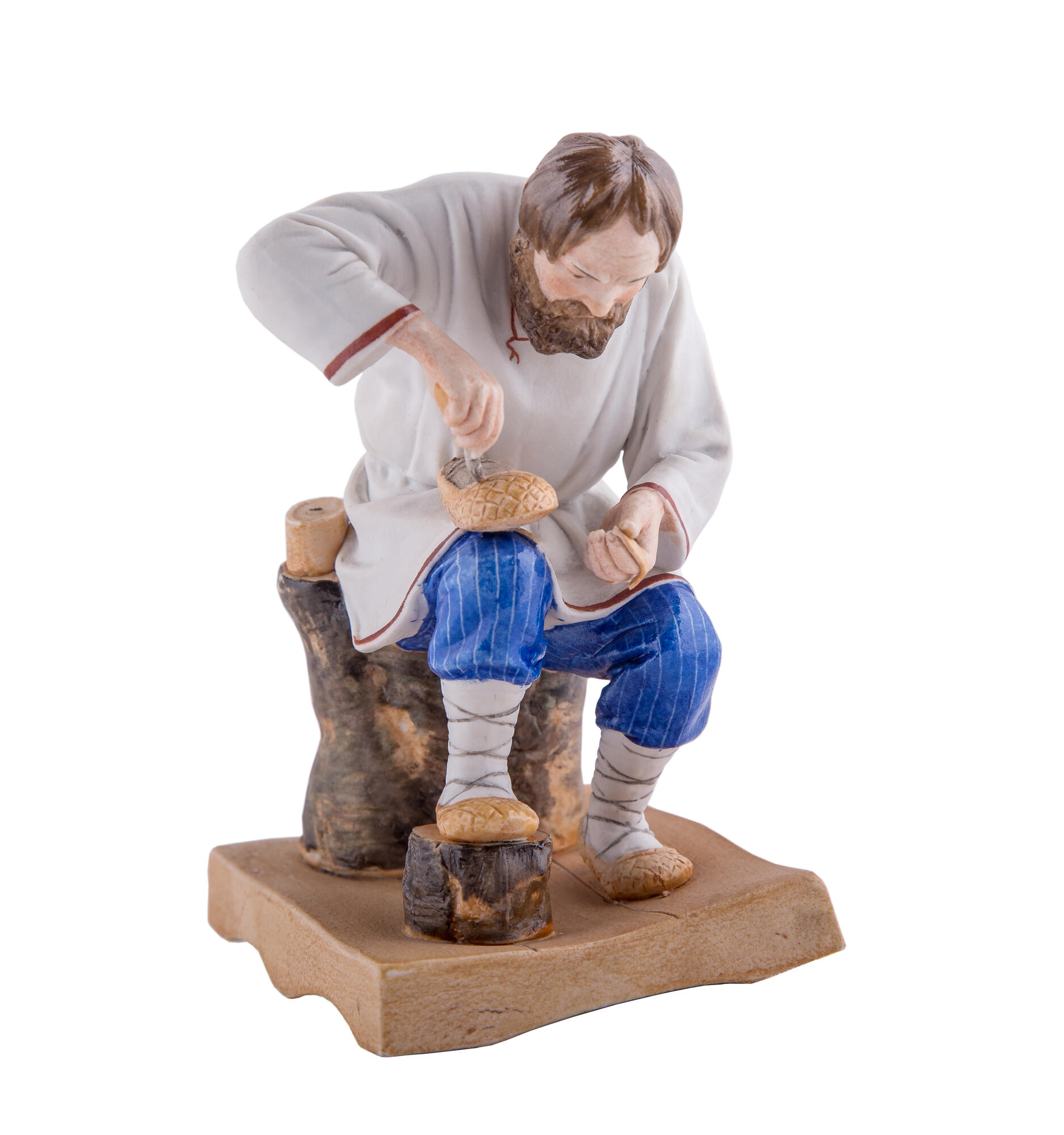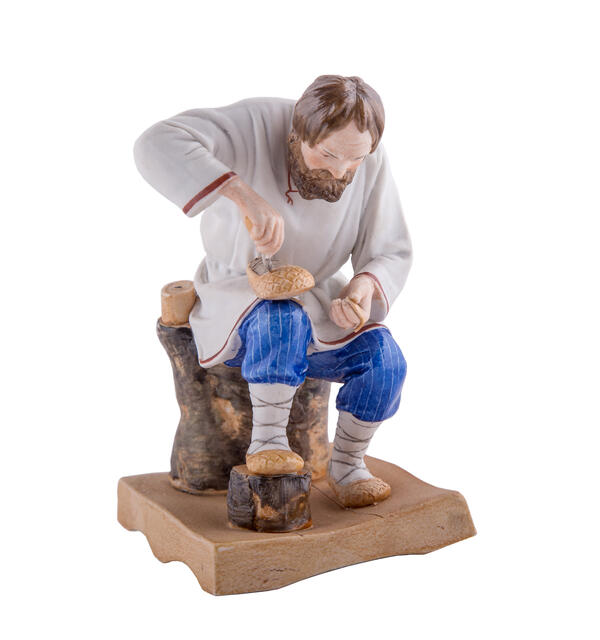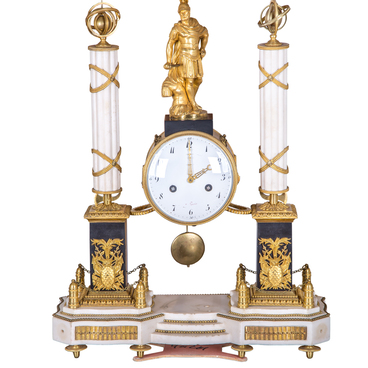The porcelain figurine “Bast Shoemaker” represents a Russian peasant weaving bast shoes. That was the name of the person who made, sold and wore them. The figurine was purchased by the museum in a thrift store in the 1930s. It is an original product of the Alexander Gavrilovich Popov factory, which was founded at the beginning of the XIX century. It was located in the village of Gorbunovo, Dmitrov district, Moscow province. Now it is in the city limits of Khotkov of Sergiev Posad district. The factory’s products were famous not only for their high-quality and artistically excellent dishes.
Exclusive piece tray (gift) products gave special popularity and fame to the production. The most valuable were serial sculptural miniatures, such as the presented peasant weaving bast shoes. They showed the characters of the Russian peasant and urban environment. They began to be produced in the 1830s. The masters worked on them very carefully and gave them realistic features. Literally with ethnographic authenticity, they reproduced even the smallest details. This figure has a factory mark in the test with the monogram “AP” and the sign “s”. This is how Popov’s products were labeled from the late 1810s to the 1860s.
The small sculpture is made of biscuit porcelain (the so-called porcelain without glaze) and has a polychrome painting, that is, it is painted in several colors. The plot plausibly reflects one of the most common peasant male occupations in winter. They began weaving bast shoes strictly on the day of St. Pancratiy of Tavromenia — February 9 under the Julian calendar, and on February 22 under the Gregorian calendar. This holiday was popularly called “Pankratiy-Bast-Shoe”, “Laptev Day”. There was even a saying: “Not every Pankrat is rich in bread, but our Pankrat is rich in bast shoes.” The material for such shoes was stored in the summer. One pair of bast shoes needed at least three limes. The bast shoes wore out quickly: “For the road the five bast shoes have to be weaved.” Riddles were invented about bast shoes: “I was born in the forest, I was baptized in hands, I died on feet.” Each member of the peasant family needed 5-6 pairs for the season. Boys started teaching this craft from the age of 7-8, and by the age of 10-12 they could already skillfully weave shoes from bast as adults. In Russia, bast shoes were worn in the countryside from ancient times until the thirties of the XX century.
Exclusive piece tray (gift) products gave special popularity and fame to the production. The most valuable were serial sculptural miniatures, such as the presented peasant weaving bast shoes. They showed the characters of the Russian peasant and urban environment. They began to be produced in the 1830s. The masters worked on them very carefully and gave them realistic features. Literally with ethnographic authenticity, they reproduced even the smallest details. This figure has a factory mark in the test with the monogram “AP” and the sign “s”. This is how Popov’s products were labeled from the late 1810s to the 1860s.
The small sculpture is made of biscuit porcelain (the so-called porcelain without glaze) and has a polychrome painting, that is, it is painted in several colors. The plot plausibly reflects one of the most common peasant male occupations in winter. They began weaving bast shoes strictly on the day of St. Pancratiy of Tavromenia — February 9 under the Julian calendar, and on February 22 under the Gregorian calendar. This holiday was popularly called “Pankratiy-Bast-Shoe”, “Laptev Day”. There was even a saying: “Not every Pankrat is rich in bread, but our Pankrat is rich in bast shoes.” The material for such shoes was stored in the summer. One pair of bast shoes needed at least three limes. The bast shoes wore out quickly: “For the road the five bast shoes have to be weaved.” Riddles were invented about bast shoes: “I was born in the forest, I was baptized in hands, I died on feet.” Each member of the peasant family needed 5-6 pairs for the season. Boys started teaching this craft from the age of 7-8, and by the age of 10-12 they could already skillfully weave shoes from bast as adults. In Russia, bast shoes were worn in the countryside from ancient times until the thirties of the XX century.


